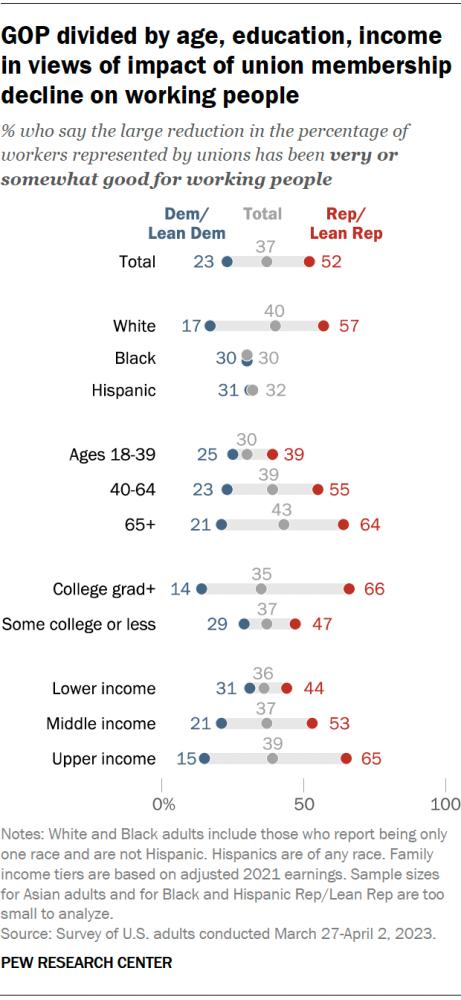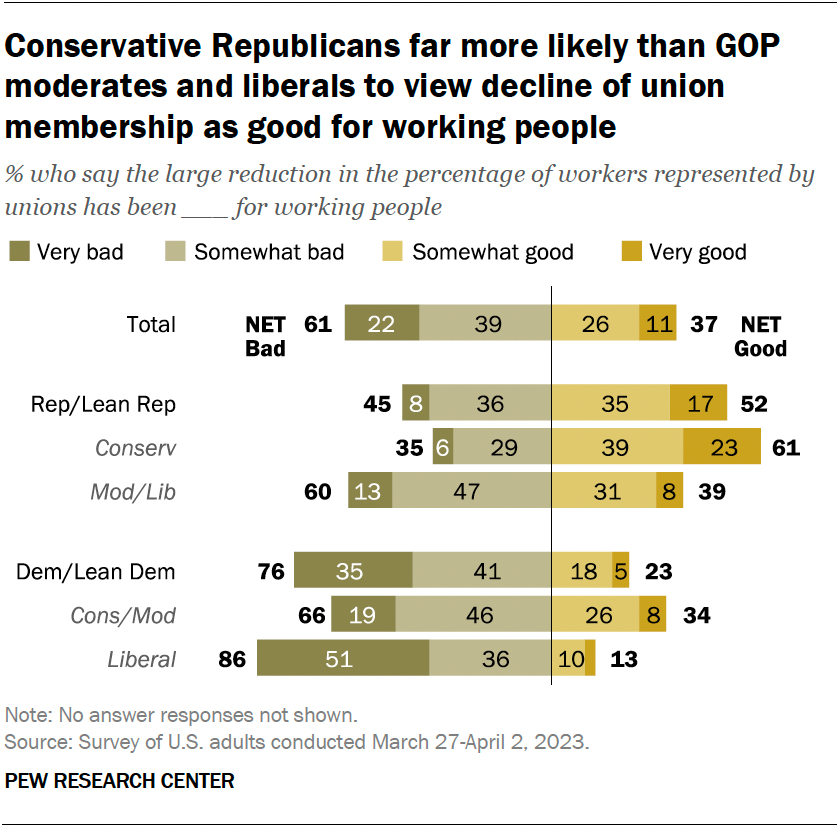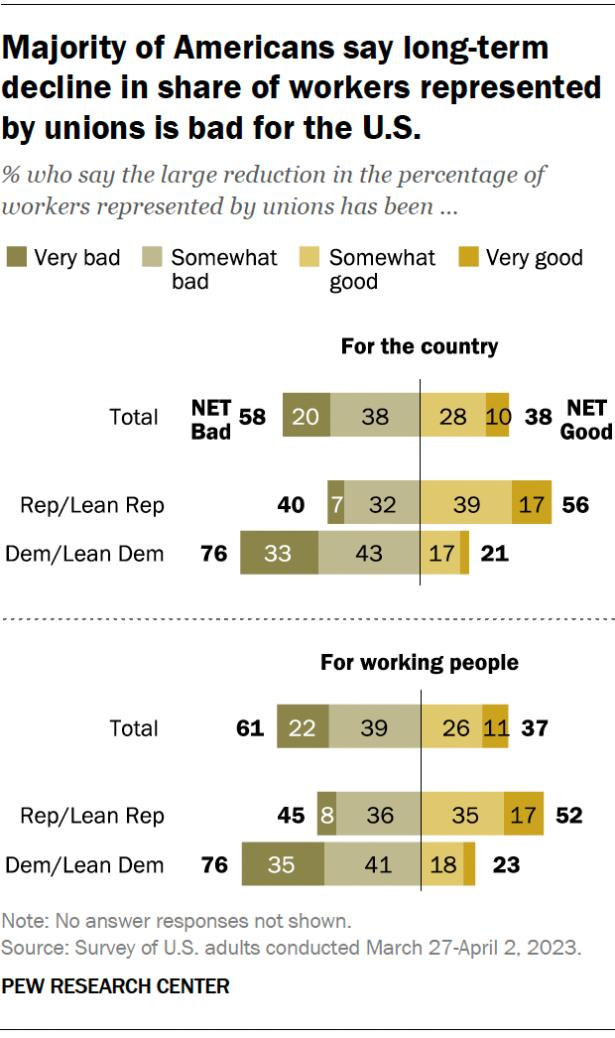Roughly six-in-ten U.S. adults say the large reduction over the past several decades in the percentage of workers who are represented by unions has been somewhat or very bad for the country (58%) and for working people (61%). These figures are nearly the same as last year.
The share of U.S. workers who belong to a union has fallen since 1983, when 20.1% of American workers were union members. In 2022, 10.1% of U.S. workers were in a union.
While there are modest demographic differences in the perceived impacts of the decline in union membership, partisan differences are much more pronounced.
About three-quarters of Democrats and Democratic-leaning independents (76%) say the decline in the percentage of workers represented by unions in recent decades has been very or somewhat bad for the country, and an identical share say it has been bad for working people. Among Republicans and GOP leaners, 40% say the decline of organized labor has been bad for the country and 45% say it has been bad for working people.
Among Republicans, there are sizable age, educational and income divides in views about the impact of the decline of union membership on working people. The differences among Democrats are more modest.

Older Republicans are more likely than younger Republicans to view the decline in union membership as good for working people: 64% of Republicans ages 65 and older say the decline of unions has been very or somewhat good for working people, compared with 39% of those under age 40.
Upper-income Republicans (65%) are more likely than their counterparts in the middle- (53%) and lower-income (44%) tiers to view the decline in union membership as very or somewhat good for working people.
Among Democrats, no more than a third across demographic groups see the decline in organized labor as good for working people. However, those without a college degree are 15 percentage points more likely than those with a college degree to say this (29% vs. 14%). Lower-income Democrats (31%) are also more likely than middle- (21%) and upper-income (15%) Democrats to view the decline in union membership as a good thing for working people. There are no substantial differences among Democrats by age.
A majority of White Republicans (57%) say the decline of union membership has been at least somewhat good for working people. The sample sizes for Asian adults and for Black and Hispanic Republicans are too small to analyze.
Meanwhile, White Democrats (17%) are less likely than Black (30%) or Hispanic Democrats (31%) to say the decline in unionization has been good for working people. The sample size for Asian Democrats is too small to analyze.
While Republicans and Democrats overall differ greatly on whether these shifts have been good for working people, ideological differences are evident within both parties.
A majority of conservative Republicans (61%) say the decline in organized labor membership has been at least somewhat good for working people, including 23% who say this has been very good. In contrast, 39% of moderate and liberal Republicans say this has been at least somewhat good for working people, while a majority (60%) say it has been bad.

While large majorities of Democrats across ideological groups say the decline in the percentage of workers represented by unions has been bad for working people, liberal Democrats (86%) are more likely to say this than conservative and moderate Democrats (66%). Liberal Democrats are particularly likely to say the decline in organized labor has been very bad for working people: 51% say this, compared with 19% of conservative and moderate Democrats.
Note: This is an update of a post originally published on Feb. 18, 2022. Here are the questions used for the analysis and its methodology.


Spread the word